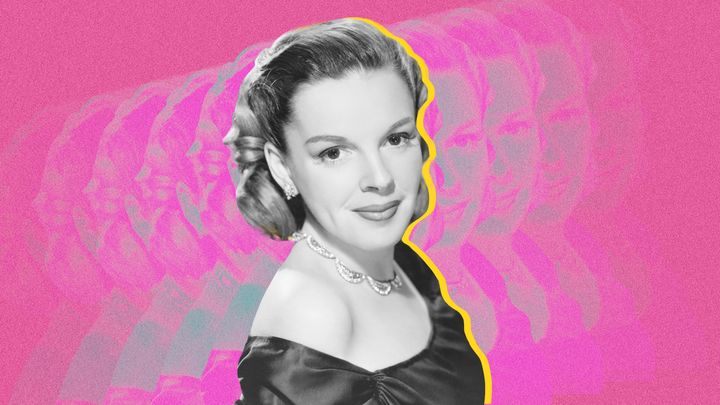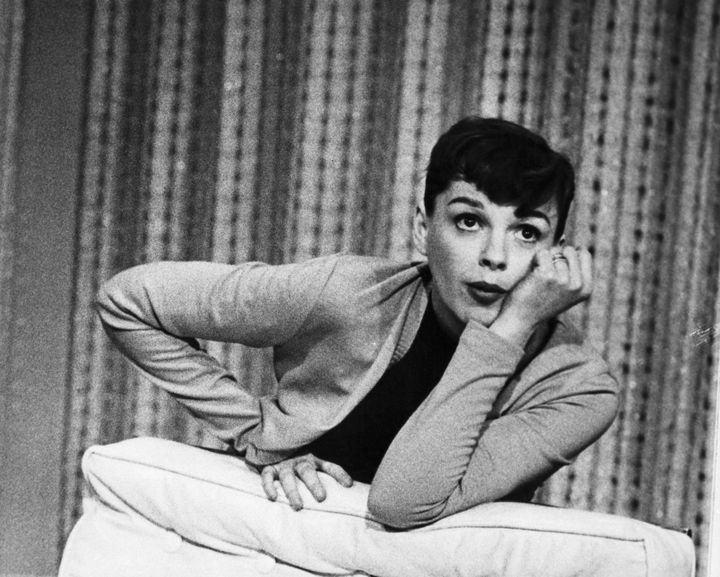
Everyone has a moment in The Wizard of Oz that they identify with. Perhaps you see yourself in the Scarecrow, Tin Man or Cowardly Lion, as they ache for things like a brain, a heart and some courage — three concepts the Great and Powerful Oz point out that they already possess.
Maybe you relate to the way Dorothy wanted to fly beyond the rainbow so that all of her troubles are whisked away. Cult gay filmmaker John Waters said he was the “only child in the audience that always wondered why Dorothy ever wanted to go back to Kansas,” he commented in a 2001 documentary.
“Why would she want to go back to Kansas, in this dreary black and white farm with an aunt who dressed badly and seemed mean to me, when she could live with magic shoes, winged monkeys and gay lions? I never understood it.”
Or maybe you’re like me, someone who still identifies most with Dorothy making a final plea to Glinda the Good Witch to send her back home.
“Oh, will you help me? Can you help me?” Dorothy cries.
“You don’t need to be helped any longer,” Glinda tells her. “You’ve always had the power to go back to Kansas.”
My earliest memory of watching The Wizard Of Oz was during Easter weekend the year I started kindergarten. In 2004, I was watching it for the first time with my cousins on a VHS rented from our local video store.
Except I was the only one really watching it. My parents and relatives had put their time in with the film as kids. My cousins would’ve had more interest in putting on TSN than watching The Wizard Of Oz. But like many queer men before me, the film became a life raft. Why would Dorothy ever want to go back to dreary, black-and-white Kansas and leave this beautifully gay, sing-songy Technicolor world? I wanted to live in it forever.
I was fascinated by pop culture from a young age for similar reasons: In a world where I felt few other people shared my interests, dwelling in the pop culture of decades past evoked that warm and fuzzy feeling straight men must get when the Stanley Cup playoffs start. I raised myself on the new DVD releases of The Brady Bunch and Happy Days; those shows gave me an excuse to live, if just for a moment, in an era that wasn’t my own.
That’s when I fell in love with Judy Garland.
Thanks to the bonus features on the new Wizard of Oz DVD my aunt bought me at Walmart, I learned about Garland’s early career as a child star at Metro-Goldwyn-Mayer and all the “hard work” she did in order to play the “role of a lifetime,” Dorothy Gale. These dated features mentioned nothing, of course, of the tortured professional and personal lives that Garland would go on to suffer for the rest of her life as a result of her early days at MGM, which allegedly starved her and hooked her on amphetamines that developed into chronic substance abuse and alcoholism.
As the years went on, my undying love for Garland became something that I pursued in private. Try as I might to fit the only mould for boyhood that I had access to, there were parts of myself I just didn’t know how to hide. I much preferred learning how to make friendship bracelets with the girls than getting dirty with the boys, and no one ever wasted any time in pointing this out.
For a while, it didn’t bother me that much — my neighbourhood friends and the women in my family never failed to love and nurture my burgeoning queer side growing up. But by the time middle school arrived, an age where friends started going separate ways and seeking solace in adults felt worse, I was on my own. It’s why to this day I’m still more likely to use “queer” before “gay” (although I identify as both), because the latter had taken on a meaning of its own for me in the junior high halls.
So I filled the wounds with pieces of art and media that meant something to me. Similar to my childhood, I wanted to bask in the pop culture of eras past, but now it had become a lifeline. I had felt so rejected and disillusioned by kids my own age and their interests that I made it my mission to find things from the past that felt like they were just mine, that no one could take away from me. It’s all fun and games to like Rihanna until you find out the girl who stole your calculator also likes Rihanna. So as long as I listened to Madonna, Whitney Houston or Paula Abdul, I had my own queer sanctuary away from it all.
The public library had also become my sanctuary, where I spent every Saturday alone with piles of books on 20th-century pop culture to make myself feel at home. Even as I was accepted into a group of friends in my later years of high school, I kept this shelter I had built for myself. When almost all my high school friends dropped me like hot soup when I chose a college downtown and they stayed in the suburbs, the loneliness got me reacquainted with an old friend whom I hadn’t visited in many years. Her name is Judy.

I started taking out all of the Judy Garland DVDs my library’s selection had to offer. I recorded marathons on TCM and watched them fervently. I bought the limited Blu-ray edition of A Star Is Born off Amazon Marketplace because I needed to have it in my collection. I bought CDs and started collecting Judy Garland vinyls. During a part of my life where I was academically overextended and suffering from an undiagnosed and unmedicated anxiety disorder that caused periods of depression, Garland’s own struggles with depression and anxiety caused by a lifetime of Hollywood suffering felt like they were mirroring my own.
Sure, I was not a former child star thrust into the spotlight by an overbearingly abusive stage mother. I was not repeatedly told I was too unattractive to be a movie star and all that kept me going was my voice, nor was I contractually obliged to turn out musical after musical for 15 years with songs to record and dance numbers to learn. But I was an overworked college student grasping to the hollow expectations of the adults around me. I was still coming to terms with my own queerness well into my late teens. And I was routinely depressed from it all. So to read and watch how Garland often felt the same way from struggles in her own life, and still had to try her damnedest to slap on a smile and put on a show, resonated deeply.
“Friend of Dorothy” is an LGBTQ+ slang term that developed in the mid-20th century as a way for queer people, mostly gay men, to secretly identify other queers in an age where male homosexuality was illegal. While its exact origin is unknown, the term is often attributed to Dorothy from The Wizard Of Oz, who defended the queerness of her Oz friends in the original novel.
But it’s more commonly associated with the character as a result of the gay cult following that Garland developed over the course of her career, as gay men facing persecution felt seen by her suffering and how much she achieved in spite of it. The Stonewall riots are often even attributed to her legacy — the riots were the night of her funeral — which supposedly prompted gays to finally fight back, although this is widely disputed.
Many historians look down upon Garland’s role in queer history, as they say it was street kids and drag queens whose riots got us to where we are today. Some experts say Garland represents an older generation of closeted queers who were appeased by the notion her death led to an uprising, when the reality was far from the case.
By college, I’d begun experimenting with keeping my gayness less of a so-called secret even though, until that point, I’d been living in what Eve Sedgwick might have called a glass closet.
“LOL, the only thing I know about Judy Garland is The Wizard Of Oz,” read a text from a boy who used to flirt with me during my second year.
Later that semester, I poured my love for Garland into a poem about her life for a creative writing workshop, which generated simultaneous praise and crickets as no one knew as much about her as I did. While the term “Friend of Dorothy” is still sometimes used on gay cruises, it’s now typically viewed as a dated euphemism as social acceptance of LGBTQ+ people has progressed significantly in the last half-century.
But real-life queer people need not look far in their everyday lives for ways in which we still have a long way to go. While I’m grateful to have been born in an age where my sexuality is not against the law, I still take pride in looking back at the activists and forefathers who played a part in coming out being less of an ordeal for people of my generation: I just started living my life the way I wanted to live it, and I credit a great deal of that to Judy Garland.
Garland’s place in queer history was long cemented before the modern fight for gay rights, and it will hopefully remain that way for future generations. It’s up to modern “Friends of Dorothy” like me to make sure queer people remember there’s always a place for them over the rainbow.
